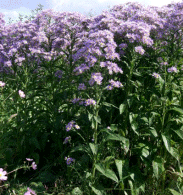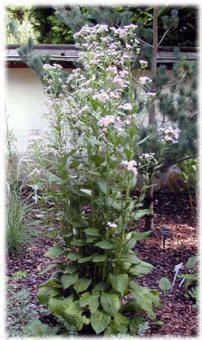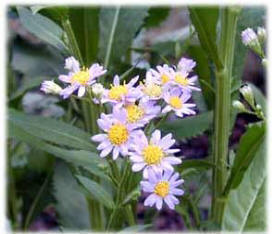Gardening News
Here is the latest gardening
article from Judy Daniels. Each month she provides us with words of
wisdom to gardeners the country over. Most of the plantings, however,
will apply to East Coast & perhaps Mid West gardens.
In The Green
by Judy Daniels

Autumn wins you best by this, its mute
Appeal to sympathy for its decay. – Robert Browning
Up at 6am recently, not a common experience, I wandered out to our garden seating area and marveled at how the dawn light intensified the colors of the navy and turquoise Adirondack chairs, the variegated leaves of our grasses, now huge, the pink shrub rose blooms and the startling fuchsia flowers of the crepe myrtles. Awaiting the potential destructiveness of our winter cold, it seemed like an unasked for blessing to see the garden still beautiful and untouched. Of course, early fall brings with it awkward gaps and a diminution of growth – insect-shredded hosta leaves, bare stalks of old daylily blooms, brown leaves falling on the lawn, and trees beginning to reveal more and more of their bones. However, during late September and early October one dynamic perennial is coming into its own.
The Tatarian Daisy (asteraceae tataricus), a member of the aster family, is a tall, upright plant reaching heights of 6’ to 8’. It seldom requires staking and marches happily wherever it finds space. In other words, the plant is very invasive. However, one of the best features of this aster is its late flowering. The flower stems branch near the top resulting in many blue to purple ray flowers. Although many asters flower until frost, they often look tired and worn out. The tataricus can still look fresh even in November. The erect stems are covered with bristly airs and the leaves are large – up to 6” wide and 2’ long. It does well in sun but also tolerates some dappled shade. This aster is a wonderful plant to use edging a path or against a fence. Tartaricus can be ordered from Avant Gardens at their website: www.avantgardensne.com. Or if in a hurry, contact me at judydan@mindspring.com and I’d be glad to let you dig a couple up to take home.


(detail)